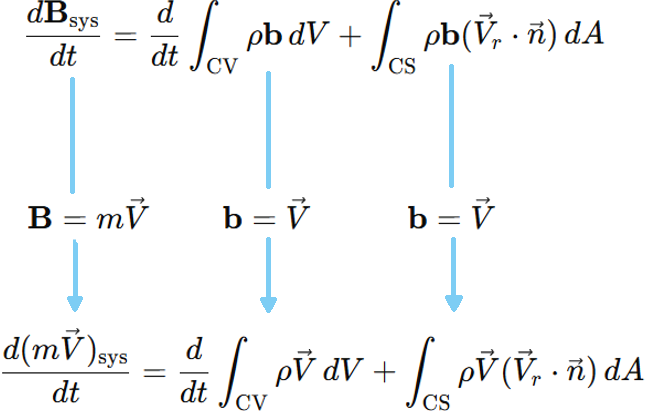Therefore, Newton’s second law can be stated as the sum of all external forces acting on a system is equal to the time rate of change of linear momentum of the system. This statement is valid for a coordinate system that is at rest or moves with a constant velocity, called an inertial coordinate system or inertial reference frame. Accelerating systems such as aircraft during takeoff are best analyzed using noninertial (or accelerating) coordinate systems fixed to the aircraft

The Reynolds transport theorem provides the necessary tools to shift from the system formulation to the control volume formulation. Setting \( b = \vec{V} \) and thus \( B = m \vec{V} \), the Reynolds transport theorem is expressed for linear momentum as \[ \frac{d (m \vec{V})_{\text{sys}}}{dt} = \frac{d}{dt} \int_{\text{CV}} \rho \vec{V} \, dV + \int_{\text{CS}} \rho \vec{V} (\vec{V}_r \cdot \vec{n}) \, dA \] In general \(\boxed{ \sum \vec{F} = \frac{d}{dt} \int_{\text{CV}} \rho \vec{V} \, dV + \int_{\text{CS}} \rho \vec{V} (\vec{V}_r \cdot \vec{n}) \, dA} \)
1Fluid Mechanics: Fundamentals and Applications Fourth Edition. Çengel and J. M. Cimbala, McGraw-Hill, New York (2018).